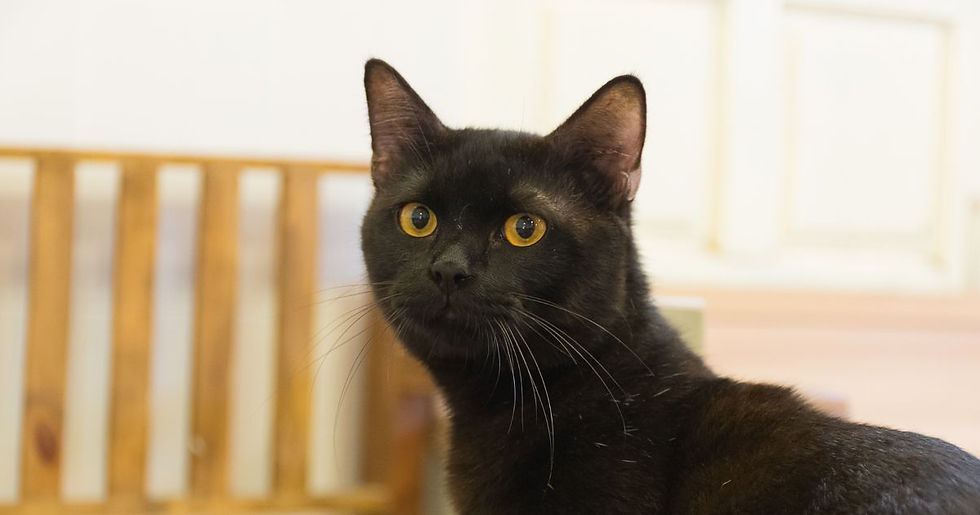Weight Loss in Older Pets: Why It’s Not Always Normal
- Dr. Liz Munro

- Aug 18
- 4 min read

It’s common to hear that pets naturally “slim down” as they age—but unintentional weight loss in older dogs and cats should never be dismissed. While a slight change in body condition can be expected due to decreased activity or muscle mass, noticeable or ongoing weight loss often signals an underlying health issue that deserves attention.
In this guide, we explore the potential causes of weight loss in senior pets, what signs to watch for, and why a timely veterinary check-up can make all the difference.
Contents
Why Weight Loss Matters in Older Pets
Weight loss in an older pet isn’t just about appearance—it’s often the first visible sign of something going wrong internally. Because many senior pets already face age-related changes in organ function, metabolism, and mobility, their ability to recover from illness or nutritional imbalance is reduced. When they begin to lose weight without a clear explanation (like a changed diet), it’s important to investigate.
Some pet owners assume weight loss is a natural part of ageing, especially if their pet still has a good appetite or appears otherwise content. But even subtle changes in body condition can indicate problems such as chronic disease, malabsorption, or even cancer.
Common Causes of Weight Loss
There are many possible reasons why an older pet may start losing weight, even if they’re eating normally or more than usual. Identifying the root cause early can help ensure appropriate treatment and support.
Hyperthyroidism (in cats): A common condition in older cats, hyperthyroidism speeds up metabolism, causing weight loss despite a strong appetite. It may also cause restlessness, vomiting, or increased thirst.
Diabetes mellitus: Seen in both cats and dogs, diabetes often causes muscle wasting, increased hunger, urination, and thirst. Weight loss happens as the body breaks down fat and muscle to make up for poor glucose use.
Kidney disease: Chronic kidney failure is common in ageing pets. It leads to nausea, loss of appetite, muscle loss, and dehydration—all of which contribute to weight loss.
Cancer: Some cancers directly cause weight loss by affecting metabolism or invading digestive organs. Others cause it indirectly through inflammation or poor nutrient absorption.
Heart disease: A failing heart can lead to “cardiac cachexia,” where the body loses muscle mass despite normal or even increased caloric intake.
Dental problems: Sore teeth, infected gums, or oral tumours may reduce a pet’s willingness or ability to eat enough food.
Digestive disorders: Issues like inflammatory bowel disease (IBD) or pancreatic insufficiency can impair nutrient absorption, leading to weight loss even when eating appears normal.
In some cases, weight loss results from a combination of ageing, reduced mobility, and insufficient caloric intake—especially if food needs haven’t been adjusted to suit changing metabolism.
Warning Signs Beyond the Scales
Weight loss may not always be obvious at first, especially in long-haired pets or those who are already lean. That’s why it’s important to look for other subtle signs that something’s wrong:
Visible spine, ribs, or hip bones: Even in active pets, this can indicate muscle or fat loss.
Changes in appetite: Either eating more (but losing weight) or eating less.
Lethargy or reduced interest in play or walks
Increased thirst or urination
Vomiting, diarrhoea, or changes in stool
Muscle wasting: Especially along the back and hind limbs.
Unkempt coat or reduced grooming: In cats, this may reflect discomfort or declining health.
Regular weigh-ins—either at home or during vet visits—can help you detect trends before they become severe.
What Your Vet Will Check
If you bring your pet in for unexplained weight loss, your vet will begin with a thorough examination and history-taking. They’ll ask about diet, appetite, energy levels, and any recent behavioural or physical changes. From there, they may recommend:
Blood tests: To assess organ function, glucose levels, thyroid hormones, and signs of inflammation or infection.
Urinalysis: To check for kidney disease, diabetes, or urinary tract infections.
Imaging (X-rays or ultrasound): Especially if there’s concern about tumours, organ size, or gastrointestinal changes.
Faecal analysis: To rule out parasites or malabsorption issues.
Dental exam: To check for painful teeth or gum disease that might affect eating.
Early diagnosis allows for more effective treatment or management, whether it’s medication, dietary adjustments, or supportive care.
FAQs
Isn’t it normal for older pets to get thinner?
Mild changes can be normal due to reduced activity or muscle tone. But unintentional or unexplained weight loss should always be investigated—it’s often the first sign of disease.
My pet is eating more than ever—why are they still losing weight?
Conditions like hyperthyroidism and diabetes can increase appetite while still causing weight loss due to inefficient metabolism or poor nutrient use.
Can I just feed my pet more to stop the weight loss?
Not without knowing the cause. Overfeeding without treating the underlying issue can cause discomfort or worsen other problems. Always speak to your vet first.
What should I do if I notice weight loss but my pet seems fine otherwise?
Book a vet check. Some illnesses progress silently, and catching them early—before more obvious symptoms arise—can make a huge difference in treatment success.















